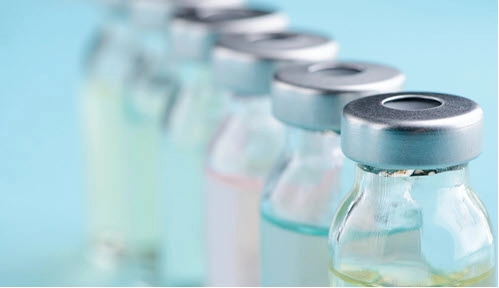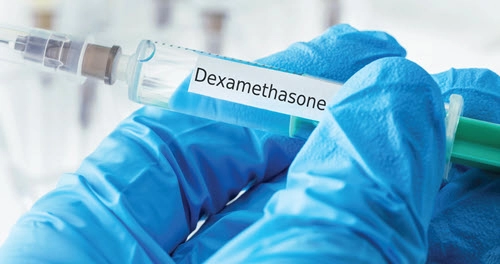Concentrate on the dose and you won’t waste time.
Coding for therapeutic injections can be problematic for a number of reasons, chief among them being calculating the number of units of a given drug. That calculation often involves a confusing conversion from your pediatrician’s dosage to the units of the HCPCS code applicable to the drug. That can be made even more complicated when you consider the concentration of the drug your pediatrician is administering. And there will be times when the dose your pediatrician administers to your patient will be less than the amount of the drug in the vial, leaving you with the potential problem of how to bill for the unused portion of the drug.
If all this leaves you confused, don’t worry. We called in a couple of coding experts to help take you through the process step by step.
Here’s how they broke it down.

Step 1: Locate the J Code, Know Your Billing Units
Scenario: A pediatrician administers 10 mg of dexamethasone sodium phosphate to a patient.
The HCPCS Appendix 1 – Table of Drugs directs you to J1100 (Injection, dexamethasone sodium phosphate, 1 mg). The descriptor for J1100 not only tells you what the drug is, but it also tells you the units used to bill the drug — in this case, 1 mg.
In our example, this means you will be billing for 10 units of J1100. But that’s the easy part of the whole thing.
Step 2: Know the Size of the Vial Containing the Drug
“The next question to ask is whether or not the vial the pediatrician used to administer the drug was a single-use or a multiuse vial,” says Donna Walaszek, CCS-P, billing manager, credentialing/coding specialist for Northampton Area Pediatrics, LLP, in Northampton, Massachusetts.
Why is this important? “To determine the number of billable units, you need to know the billable unit per the HCPCS code and the amount of drug in the vial for proper reimbursement. Multiuse vials contain several doses of the medication for multiple administrations, so you will only bill for the portion of the vial that your pediatrician used, while single-use vials contain just one dose, so you will bill the entire vial,” Walaszek continues.
Step 3: Know the Concentration
When drugs are administered in a liquid form, the active drug is suspended in the liquid. When this happens, the drug concentration is often expressed in units of mg/mL, where the amount of the drug, measured in milligrams (mg), is expressed alongside the amount of the liquid, measured in milliliters (mL).
In our example, as the pediatrician administers a 10 mg/mL dose, the calculation is easy: as the billing unit is 1, you will bill for 10 units. But when the drug concentration is different, billing can get tricky. Let’s suppose your provider administers the same amount of the drug but in a concentrated form of 4 mg/mL. In this situation, 4 units of the drug will equal 1 mL of liquid, so the provider will have to inject 2.5 mL of the solution in order for the patient to receive 10 mg of the drug.
Your unit billing for the J1100 will remain unchanged in this situation as the dosage (10 mg) is still the same. But depending on the size of the vial, you may now have to document wastage.

Step 4: Know How to Document Wastage
Single-dose and multidose drug vials come in different sizes. In our first concentration example, let’s assume the pediatrician administered the drug using a single-dose, 1 mL vial. As the drug dosage was 10 mg at a concentration of 10 mg/mL, the pediatrician could administer the entire dose using this vial with no wastage.
Using our second, 4 mg/mL concentration example, the calculation gets even trickier if the single-dose vial size remains at 1 mL. That’s because in order to administer the same dose to the patient, your provider must inject 2.5 mL, which is equivalent to 2.5 1 mL vials.
In the event of this happening or, more likely, in the event the pediatrician has to administer a dose to the patient that is smaller than the amount in a single-use vial, “per the Centers for Medicare & Medicaid Services [CMS], you’ll use modifier JW [Drug amount discarded/not administered to any patient] if the discarded amount is equal to or greater than 1 billing unit of the drug. If it is less, you would not use modifier JW. Instead, your chart documentation should state, ‘any residual medication discarded,’” according to Walaszek.
In the 4 mg/mL concentration example, the amount discarded would be 0.5 mL: half the third single-use vial. As the billing unit for dexamethasone sodium phosphate is 1 mg, and the wastage in this example is 2 mg — an amount greater than the billing unit — you should go ahead and bill the discarded amount on another line of the claim along with the JW modifier to indicate that your practice has discarded the given amount of the drug.
Multiuse vial exception: Medicare requirements only tell you to report wastage for single-use vials. You do not report multiuse vial drug waste to Medicare.
Step 5: Don’t Forget the Administration Code
For this, you will have to know the route your pediatrician used to administer the drug and choose the correct therapeutic drug administration code such as 96372 (Therapeutic, prophylactic, or diagnostic injection [specify substance or drug]; subcutaneous or intramuscular) or 96373 (…intra-arterial).
Step 6: Select the Proper NDC Number
“Many payers require the reporting of national drug codes [NDCs] with claims for payment,” notes Jan Blanchard, CPC, CPEDC, CPMA, pediatric solutions consultant at Vermont-based PCC. Luckily, the Federal Drug Administration [FDA] maintains a searchable database of these codes (www.accessdata.fda.gov/scripts/cder/ndc/index.cfm). The FDA assigns unique codes to each substance with a unique proprietary name, strength, dosage, and route of administration.
But remember: “Be careful to report the product code which exactly matches what you administer and the way it is administered. Multiple NDC numbers may exist for a given drug to correspond with their different forms of packaging: bottle, dropper, carton, etc. Consult with your carriers to be sure about their requirements for your need,” Blanchard cautions.
